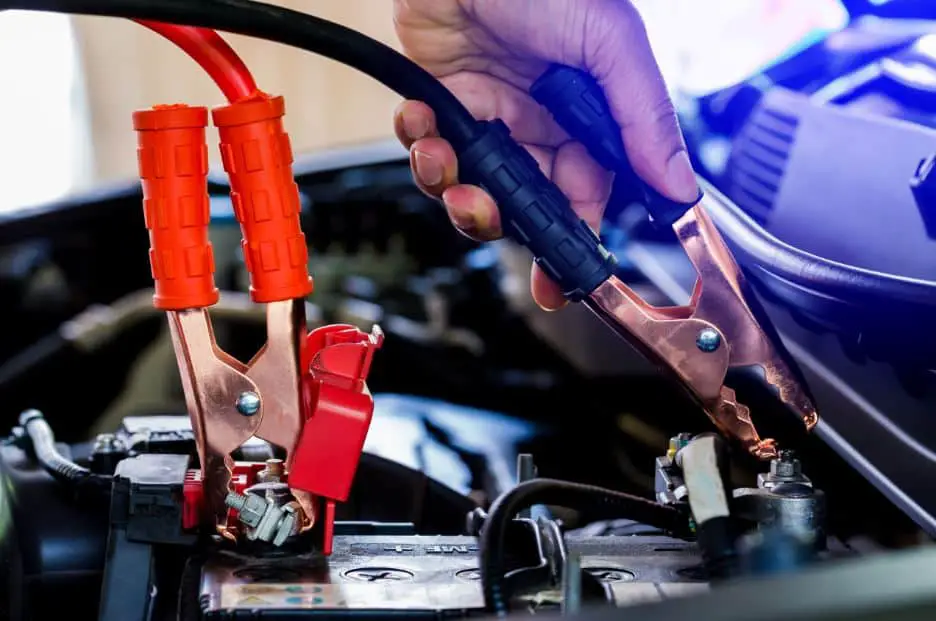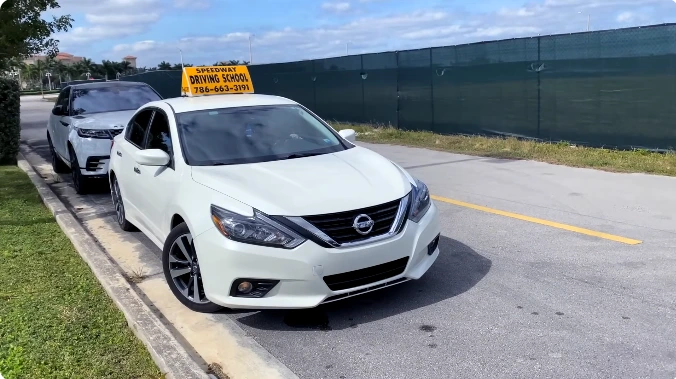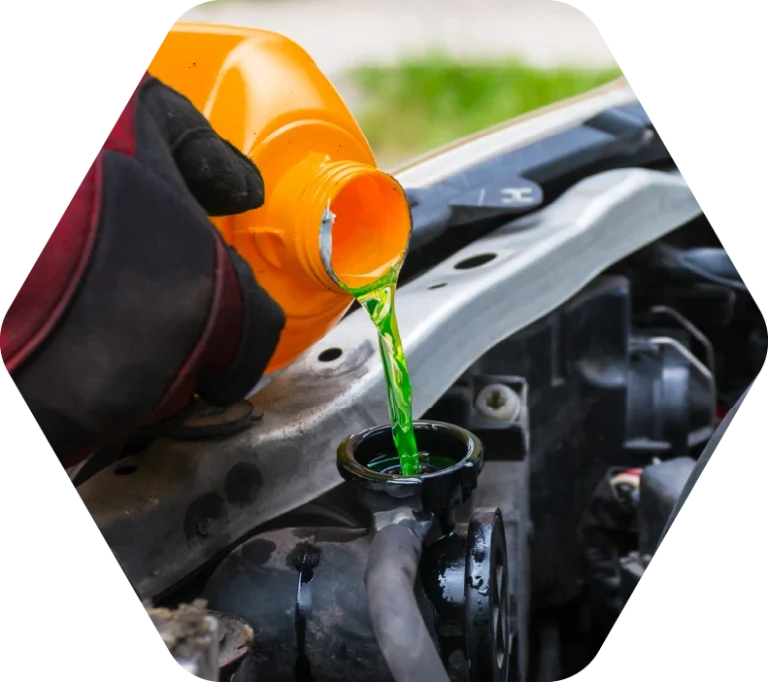5 Shocking Reasons Your Jumper Cables Are Smoking, Hot, or Melting
Jumper cables can smoke, get hot, or melt due to a faulty connection, insufficient gauge size, overloading, high resistance, or incorrect polarity. Jumper cables are a crucial tool for jump-starting vehicles, but it can be concerning when they start smoking, getting hot, or even melting.
These issues can point to underlying problems that need to be addressed promptly to avoid further damage or hazards. We will explore five reasons why your jumper cables may exhibit these alarming symptoms. By understanding these causes, you will be equipped with the knowledge to prevent potential car battery mishaps and ensure your safety on the road.
Stay tuned to discover the primary culprits behind smoking, hot, or melting jumper cables and learn practical solutions to mitigate these issues.
Inadequate Gauge Wire
Choosing The Wrong Gauge Wire For Your Jumper Cables
Have you ever experienced the unsettling sight of your jumper cables smoking, getting hot, or even melting? This could be a sign of a serious issue that needs your attention. One of the main reasons why your jumper cables may be behaving this way is due to the use of inadequate gauge wire.
Let’s delve into this topic and understand why choosing the right gauge wire is crucial in preventing overheating.
- The gauge of wire refers to its thickness, and jumper cables typically come in different gauge sizes. Using the wrong gauge wire can lead to various problems, including overheating.
- When you select jumper cables with a higher gauge number (e.g., 16 gauge), they have thinner wires compared to those with lower gauge numbers (e.g., 8 gauge). Thinner wires tend to have higher resistance and may not handle heavy current flow effectively, leading to overheating.
- Inadequate gauge wire can cause a voltage drop, which means that the power flowing through the cables decreases as it travels. This voltage drop can result in more current being drawn from the battery to compensate, leading to overheating of the cables.
- If your jumper cables are smoking, hot, or melting, it is likely because the wires are unable to handle the high current passing through, causing them to heat up excessively.
- Choosing jumper cables with the right gauge wire for the intended purpose is essential. If you frequently use your jumper cables for jump-starting larger vehicles or in emergency situations, opting for a lower gauge wire (thicker wire) can ensure the cables can handle the current without overheating.
Remember, the gauge wire you choose for your jumper cables plays a significant role in their performance and safety. By selecting the appropriate gauge wire, you can prevent overheating issues and ensure a successful jump-start. Stay tuned for the other factors that can cause your jumper cables to smoke, get hot, or melt.
Improper Connection Techniques
When it comes to using jumper cables, it’s important to know the proper techniques to avoid any risks or complications. One common mistake that can lead to smoking, hot, or melting jumper cables is incorrectly connecting them to the batteries.
Let’s explore the key points to understand the risks associated with improper connection techniques.
- Incorrect placement of positive and negative clamps: If you mistakenly connect the positive clamp to the negative terminal and vice versa, a short circuit can occur. This can result in excessive current flow and cause the jumper cables to heat up, smoke, or even melt. Make sure to double-check the battery terminals and their corresponding clamps before connecting.
- Loose or weak connections: If the clamps are not securely attached to the battery terminals, it can create resistance in the circuit. This resistance leads to increased heat generation, which can eventually cause the jumper cables to overheat or melt. Always ensure a tight and secure connection between the clamps and the battery terminals.
- Insufficient gauge of jumper cables: Using jumper cables with a lower gauge than recommended can also lead to overheating. The gauge refers to the thickness of the cables, and lower gauge cables are thicker and can handle higher currents. If the jumper cables are too thin for the required current, they can heat up quickly and even melt under the excessive load.
- Extended duration of jump-starting: Leaving the jumper cables connected for an extended period can also contribute to the cables overheating. When jump-starting a vehicle, it is essential to start the engine of the dead battery vehicle as soon as possible and then disconnect the cables promptly. Prolonged connection time can result in excessive current flow, causing the cables to smoke, become hot, or melt.
- Repeated jump-starting without giving the cables time to cool down: Jump-starting multiple vehicles in succession without allowing the cables to cool down can lead to overheating. The cables need time to dissipate the heat generated during the jump-starting process. Failure to do so can cause the cables to become excessively hot, melt their insulation, or even pose a fire hazard.
Remember, using jumper cables requires proper connection techniques to ensure safety and avoid damaging the cables. By being mindful of correct clamp placement, securing tight connections, using cables with the appropriate gauge, minimizing jump-start duration, and allowing cooling time between jumps, you can significantly reduce the risk of smoking, hot, or melting jumper cables.
Stay cautious and follow these guidelines to protect yourself and your vehicle.
Battery Malfunction
Identifying Signs Of A Malfunctioning Battery
- The battery plays a crucial role in the starting process of your car. If it is malfunctioning, there are several signs to look out for:
- Dim or flickering headlights: When your battery is not functioning properly, you may notice your headlights appearing dimmer than usual or flickering intermittently.
- Slow cranking of the engine: A malfunctioning battery can cause your engine to crank slowly or have difficulty starting.
- Clicking sound when starting: If you hear a clicking sound when trying to start your car, this could indicate a weak or dying battery.
- Electrical issues: Malfunctioning batteries may also cause electrical problems, such as malfunctioning power windows, radio, or dashboard lights.
How A Faulty Battery Can Cause Jumper Cables To Smoke, Get Hot, Or Melt
- A faulty battery can have serious consequences when using jumper cables. Here’s how it can lead to cables smoking, getting hot, or even melting:
- Overheating due to excessive current flow: When a battery is faulty, it can draw too much current from the donor vehicle or charger when attempting a jump-start. This excessive current flow can cause the jumper cables to overheat and potentially smoke, get hot, or even melt.
- Short circuiting: If the battery is damaged or has a short circuit, it can send a surge of excessive current through the jumper cables. This sudden surge can result in the cables overheating and potentially causing smoke or melting.
- Resistance in the battery: A faulty battery may have internal resistance, causing it to draw more current than usual from the donor vehicle or charger. This increased current flow can lead to excessive heat in the jumper cables, potentially causing them to smoke, get hot, or melt.
- Poor connection between battery and jumper cables: A loose or corroded connection between the battery terminals and the jumper cables can also result in increased resistance. This resistance generates heat, which can cause the cables to overheat and potentially smoke or melt.
- Inadequate gauge of jumper cables: If the jumper cables have too thin of a gauge, they may not be able to handle the increased current flow needed to jump-start a faulty battery. This can cause the cables to overheat and potentially smoke, get hot, or melt.
Remember, it’s important to identify signs of a malfunctioning battery and take appropriate measures to avoid any damage or danger when jump-starting your vehicle. Always consult a professional if you are uncertain about the condition of your battery or how to safely use jumper cables.
Insufficient Insulation
The Role Of Insulation In Preventing Jumper Cables From Overheating
Insufficient insulation in jumper cables can lead to a host of problems, ranging from smoking and melting to potentially causing fires. It is crucial to understand the role of insulation in preventing these dangerous situations. In this section, we will explore the importance of proper insulation in jumper cables and how to recognize signs of insufficient insulation.
Key Points:
- Insulation acts as a protective layer that prevents excess heat from building up in jumper cables. This insulation is typically made from materials like pvc or rubber, which have high resistance to heat.
- Insufficient insulation can cause the flow of electricity through the jumper cables to generate excessive heat. This can be due to worn-out or damaged insulation, exposing the conductive metal wires within.
- Overheating jumper cables due to insufficient insulation can put you at risk of electric shocks, burns, or even fires. It is crucial to regularly inspect your jumper cables for any signs of wear and tear.
- Signs of insufficient insulation include visible cracks, fraying, or exposed copper strands in the cables. Additionally, if you notice smoke, melting, or a burning smell coming from your jumper cables during use, it is highly likely that the insulation is compromised.
- It is essential to address any signs of insufficient insulation immediately. If you notice damage or wear on your jumper cables, it is advisable to replace them with new ones to ensure the safety of both yourself and your vehicle.
By understanding the role of insulation in preventing overheating in jumper cables and recognizing signs of insufficient insulation, you can take proactive steps to ensure your safety during jump-start situations. Regularly inspecting your jumper cables for any signs of wear and tear can help prevent potential risks and keep you prepared for unexpected battery failures on the road.
Remember, safety should always be the top priority when dealing with electrical equipment like jumper cables.
Overloading The Electrical System
Understanding The Limits Of Your Vehicle’S Electrical System
When it comes to jump-starting a vehicle, it’s important to understand the limits of your vehicle’s electrical system. Overloading the system can lead to smoking, hot jumper cables, or even melting. To avoid these issues, here are a few key points to keep in mind:
- Jumper cables are designed to handle a certain amount of electrical current. Exceeding this limit can cause them to overheat and smoke.
- Each vehicle has a specific amperage rating for its electrical system. Attempting to jump-start a vehicle with a higher amperage than what the system can handle can lead to overheating and damage.
- It’s essential to read your vehicle’s manual and understand its electrical system’s limitations before attempting to jump-start it.
- Older vehicles may have weaker electrical systems, so it’s important to be cautious when using jumper cables on these vehicles.
- Regular maintenance and inspection of your vehicle’s electrical system can help prevent overloading and potential damage.
The Dangers Of Overloading The System When Jump-Starting A Vehicle
Jump-starting a vehicle may seem like a simple task, but it’s crucial to be aware of the dangers of overloading the system. Overloading can not only damage your vehicle’s electrical system but also pose safety risks. Here are a few points to consider:
- Overloading the system can result in excessive current flowing through the jumper cables, leading to overheating and potential melting.
- Melting jumper cables can cause short circuits, sparks, or even fire hazards.
- Overloaded electrical systems may also damage sensitive electronics in vehicles, such as the ecu (engine control unit) or other control modules.
- In extreme cases, overloading can cause irreversible damage to the vehicle’s battery, alternator, or other components, resulting in expensive repairs.
- Taking precautions and understanding the limitations of your vehicle’s electrical system can prevent these dangers and ensure a successful jump-start.
Remember, overloading the electrical system of your vehicle when jump-starting can lead to smoking, hot jumper cables, or even melting. By understanding the limits of your vehicle’s electrical system and being cautious during jump-starting, you can avoid these risks and keep your vehicle running smoothly.
Conclusion
Understanding why your jumper cables are smoking, hot, or melting is crucial for your safety and the longevity of your vehicle. By following these guidelines, you can avoid potential hazards and prevent damage to your cables. First, check the wattage rating of your cables and ensure they can handle the power demands of your vehicle.
Secondly, be mindful of the length of time you keep the cables connected, as prolonged use can cause overheating. Regularly inspect your cables for any signs of wear and tear, and replace them if necessary. Furthermore, proper storage of your cables in a cool, dry place can help prevent melting.
Lastly, always consult your vehicle’s manual and seek professional assistance if you’re unsure about any electrical issues. By taking these precautions, you can ensure the safe and effective use of your jumper cables for years to come.





